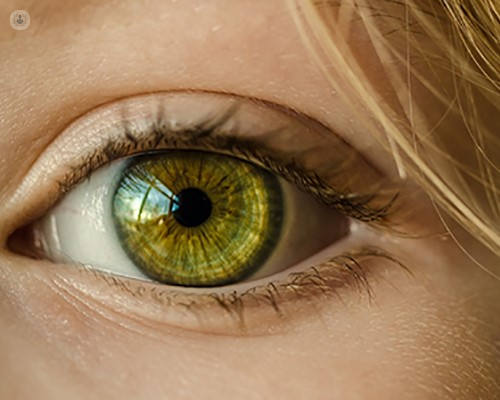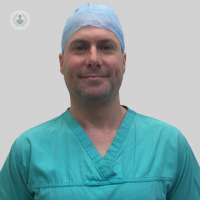Navigating macular holes: Understanding, treating, and recovering vision
Written in association with:In his latest online article, Mr Craig Goldsmith gives us his insights into macular holes. A macular hole is a small, circular gap that forms at the centre of the retina, leading to symptoms such as blurred and distorted vision, where straight lines or letters may appear wavy or bowed. This condition can affect any age group but most commonly occurs in middle-aged women. Macular holes can also result from factors like severe eye trauma, high myopia, retinal detachment, or prolonged swelling of the central retina.

Distinguishing macular holes from macular degeneration
Although both macular holes and age-related macular degeneration impact the same eye area, they are distinct conditions. Interestingly, these conditions can coexist in the same eye.
Untreated macular holes and potential risks
When left untreated, there's a small chance that some macular holes may spontaneously close, leading to improved vision. However, in most cases, central vision progressively deteriorates, making it challenging to read even the largest print on an eye chart. Notably, peripheral vision remains unaffected, preventing complete blindness from this condition.
Risk assessment for developing macular holes in the other eye
Regular eye examinations can assess the risk of developing a macular hole in the other eye. The likelihood of occurrence varies, ranging from extremely unlikely to a 1 in 10 chance. Monitoring changes in vision and promptly reporting them to eye specialists or healthcare professionals is crucial.
Macular hole treatment and success rates
The most common treatment for macular holes is a surgical procedure known as Vitrectomy, peel, and gas. Success rates are favourable, with over 90% of cases experiencing hole closure if the operation is performed within the first year. Vision improvement is notable in over 70% of cases, stabilising the vision for others. Complete restoration of normal vision is rare, and some distortion can persist. If the hole remains open a second operation can be successful using alternative techniques.
Timing of treatment and operation details
Early intervention within about 6 weeks of diagnosis tends to yield better outcomes in terms of vision improvement. The surgery involves a delicate procedure under a microscope, with tiny incisions for instrument insertion. The vitreous jelly is removed, the inner limiting membrane is peeled, and a temporary gas bubble is used to facilitate hole closure. Postoperative face-down posturing may be required, depending on the hole's size and surgeon preferences.
Post-surgery considerations and complications
Patients are advised against flying or traveling to high altitudes while the gas bubble is present (between 3 and 12 weeks depending on the type of gas used). Complications are rare but can include macular hole non-closure, retinal detachment, bleeding, infection, and increased eye pressure. The need for face-down posturing varies, and patients may need two weeks off work, with changes to spectacle prescriptions expected. Cataract formation is inevitable especially those aged over 50. Often a pre-existing cataract will be removed at the same time as the vitrectomy.
Postoperative care and follow-up
Post-surgery, patients are prescribed drops encourage healing. Follow-up appointments are essential, with reviews scheduled the next day, 10-14 days later, and approximately 3 months post-surgery. Changes to spectacle prescriptions typically occur around three months after surgery, once the gas bubble has dissipated. Individual cases may vary, so consulting with the surgeon before visiting an optician is advisable.
Mr Craig Goldsmith is a respected ophthalmologist with over 25 years of experience. You can schedule an appointment with Mr Goldsmith on his Top Doctors profile.


